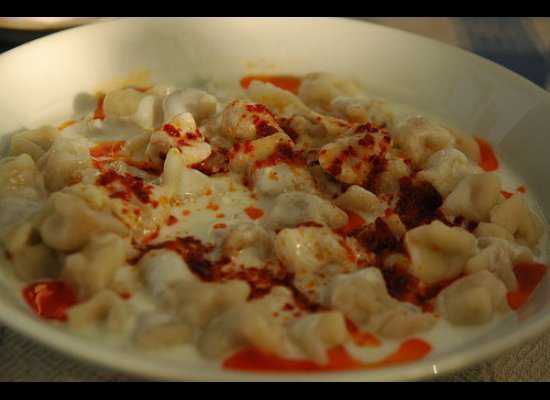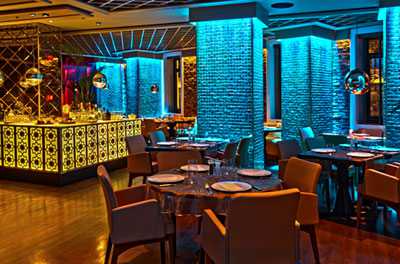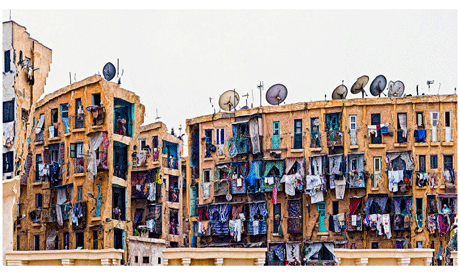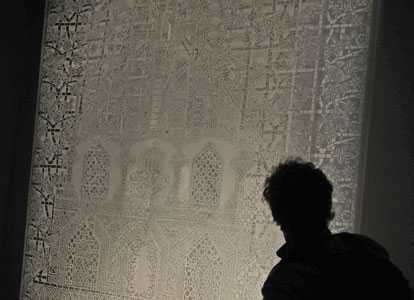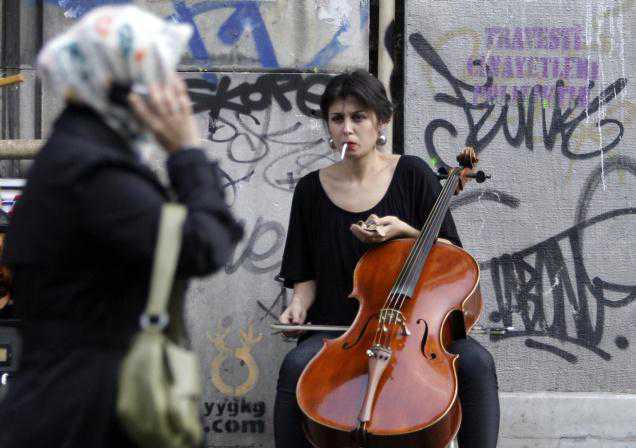Ahram Online talks to Turkish photographer Murat Germen about his amazing Muta-Morphosis series – which includes depictions of Cairo – and how photography can change the world
Ati Metwaly
Photography is on the rise globally and is no longer simply a fascinating art form; it is also an important tool for documenting the realities we see around us and offering a different angle to what we already see and know. Whether involved in socio-political conflicts or contemplating urban realities, artists and photojournalists are active protagonists in the cultural art scene and their works are the centre of attention for many artistic, commercial, and media outlets.
Born in 1965 in Istanbul, Murat Germen is never without his camera, whether he is working on a photography project, travelling, or attending conferences around the world.
Germen’s main interest is transitional threshold areas in architecture and cities, and one of his recent series, Muta-Morphosis, gives a glimpse of the colourful façades of buildings in Cairo
“What particularly attracted me in the work titled ‘Le Caire’ was the impressive extra layer of life, texture, volume and plane that balconies constitute on the buildings’ façades, which function as the backdrops to these balconies,” Germen explains to Ahram Online.
An artist and an academic, Murat travels frequently. Photos from the Muta-Morphosis series are taken in places he happens to visit for exhibitions and conferences.
“I do not principally go to certain selected cities to make ‘muta-morphosed’ depictions of them, but I make at least one or two muta-morphosis productions in each city I visit in order to build a database of urban depictions that I can later use for comparison and/or an exhibition,” he asserts.
Germen visited Egypt in 2007 for a conference in Alexandria. “My family and I went to other destinations like Cairo, the Mortuary Temple of Hatshepsut, Luxor and Karnak, but I felt the trip was too short to develop a deep impression of Egypt.”
The series also reflects other cities around the world, some of which have left a strong trace on his mind. He enumerates “Sana’a, Shibam, Marrakech, Essaouira, Fez, Al-Quds, and Esfahan” as places that have their own unique local identities that he hopes won’t be lost due to global pressures and trends.
“The totality of these unique identities make me appreciate local approaches to life, try to get rid of dictated prejudices and, most importantly, to defy the type of globalism that aims to make us all uniform.”
Muta-Morphosis was initiated in 2010 and was on display as a solo exhibition at three galleries: C.A.M Gallery (Istanbul), ARTITLED! Contemporary Art (Herpen, The Netherlands) and the Rosier Gallery (San Francisco). The Rosier Gallery will hold an online exhibition of the series during the first three months of 2012.
For Germen, Muta-Morphosis is an ongoing project and he is not “psychologically fed up with the series yet.”
“I always criticise artists who do the same thing for 20 years, just because it sells. I will be careful not to walk into the same trap. I am, for now, thinking of keeping the series in a relatively idle mode and adding more works to it sporadically when I feel it necessary.”
The series reflects Germen’s close connection to cities – he was born, raised, educated and employed in urban settings. “Cities have turned me into what I am, and I feel like it is payback/thanksgiving time,” he says. “We change cities and cities change us; I like this dynamic mutual transformation process that keeps my mind alive. This is why cities will not stop appearing in my works.”
Germen thinks the Middle East is very significant in global history because civilisation began in the region. He also observes that the Middle East is “a very noteworthy setting for world politics since it has substantial energy resources that hegemonic western countries are geo-strategically interested in. This is why these countries design various long-term political manipulations that leave the region in constant turbulence. It is unfortunate that the structure of most of the societies in the region is feudal; making it is very easy to create discord among the various nations of the Middle East. The region’s geography is very susceptible to political manoeuvrings.”
He thinks the rise in popularity of photography in recent years is beneficial for artists who work with photography as a medium of expression. Yet, he also underscores that mainstream art and its galleries, auctions, museums, etc, are too manipulative these days, as artists and artworks become a prestigious investment tool of capitalism.
“Photography that exists in such environments belonging to famous or ‘to be famous’ artists with expensive signatures has very little potential to change the world. On the contrary, this sort of practice mostly supports the status quo, consciously or unconsciously.”
Germen notices a large rise in amateur photographers, many of them working anonymously with easily portable tools such as cell phones or small digital cameras. “Those photographers carry the potential to change the course of global events, especially when they share their work through social media tools or e-mail.”
Moreover, it is due to the work of extremely courageous amateur photographers that we can witness the most shocking events taking place in the world. “If we did not see the heartbreaking cell phone photos of people dead or seriously wounded in the Fallujah massacre committed by the US army in Iraq (by bombing civilians and not letting even the Red Cross into the area), there is no way we could have learnt about it from the news agencies of hegemonic powers,” Germen stresses.
“Regular photos taken by amateurs are not manipulative, since these people do not have the skills and experience of professional photographers. These amateurs do not use their tools to convey preconceived messages that are dictated by news agencies, governments and intelligence agencies.”
With the world expressing interest in photography and the Arab Spring, Germen is sceptical about presenting artworks on such an important movement in museums and galleries that have a certain clientele. “These people, to me, do not constitute the most correct audience since they are already aware of some of the problems mentioned in the artworks. They just nod their heads to approve the message and they are told something they already knew. The other kind is the art consumers/managers who are composed of collectors, dealers, auction house specialists, artocrats, etc, and I think they don’t give a damn about the message. They are usually interested in the future financial potential of an artwork. Anarchic web platforms, underground publications, and peer-to-peer sharing seem to be better platforms of dissemination, protest, and awakening.”
In parallel to Muta-Morphosis, Germen initiated a new series called Humanscapes, in which, for the first time, people are the centre. The idea is to capture candid and non-manipulated postures, gestures, mimics, and expressions of people in an age when many images of people and their lives are fake.
“I take the photos in a blind manner from the waist level without looking through the viewfinder. The reason is, whenever you point the camera to people and they perceive your presence, they consciously or unconsciously start to act or pose and this spoils the specificity of the moment. My act of hidden photography without the consent of subjects also points to the presence of CCTV security cameras that follow us in cities without our consent. The city is of less importance here, appears partially and serves as a backdrop to the people being photographed.”
The photographs are taken in dozens of the cities such as Vancouver, Seattle, Paris, Marrakech, London, Amsterdam, Athens, Berlin, Copenhagen, Stockholm, Istanbul, Leeuwarden, Osaka, Tokyo, and Kyoto; places Germen usually visits for academic and artistic events.
Humanscapes was exhibited during the Contemporary Istanbul 2011 Art Fair in the C.A.M Gallery booth.
With a large reservoir of photographs, Germen plans a solo exhibition for late-2012 or mid-2013.
More information about Murat Germen’s work can be found on his website www.muratgermen.com
